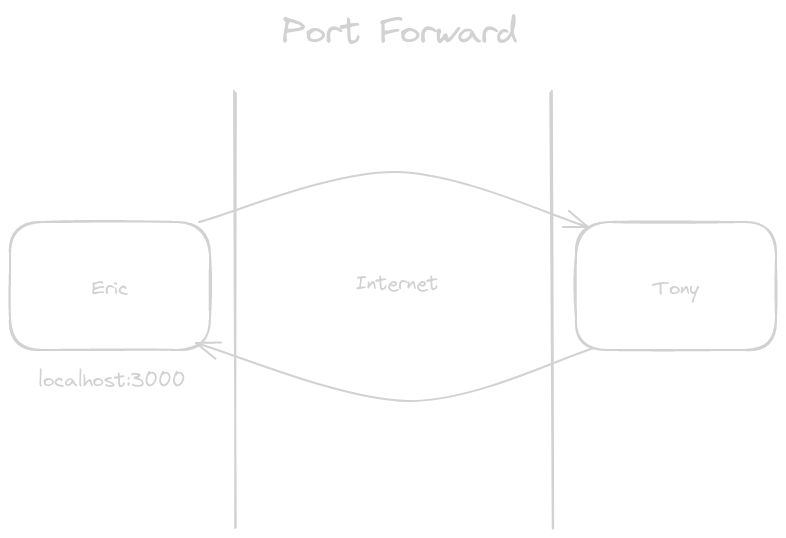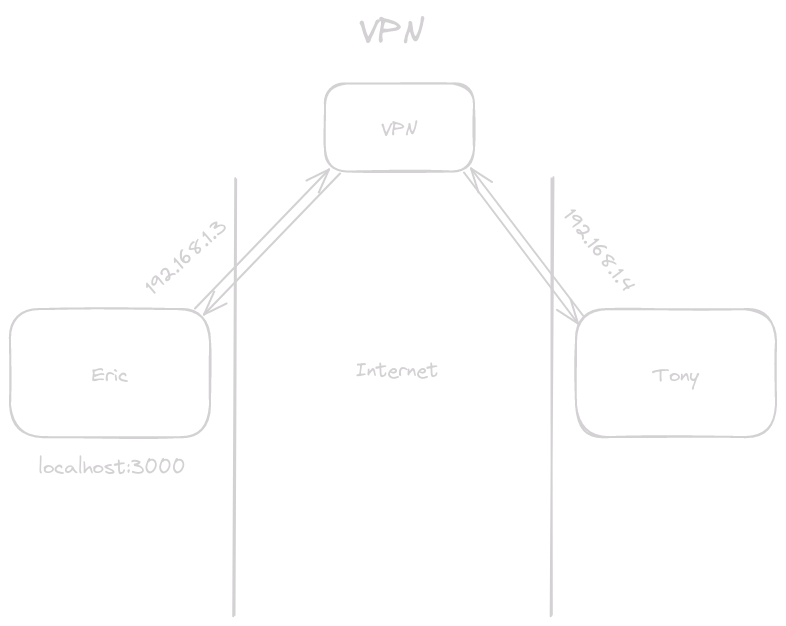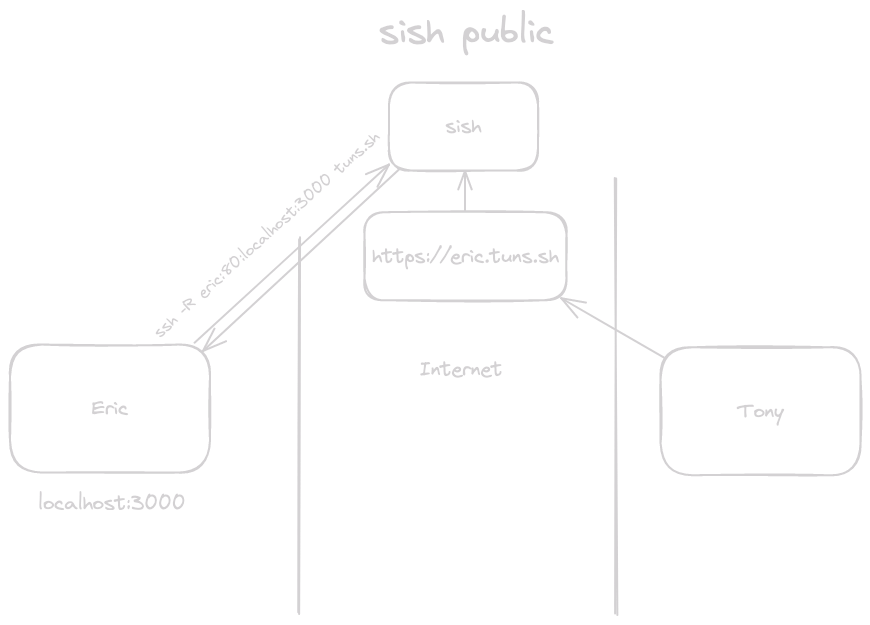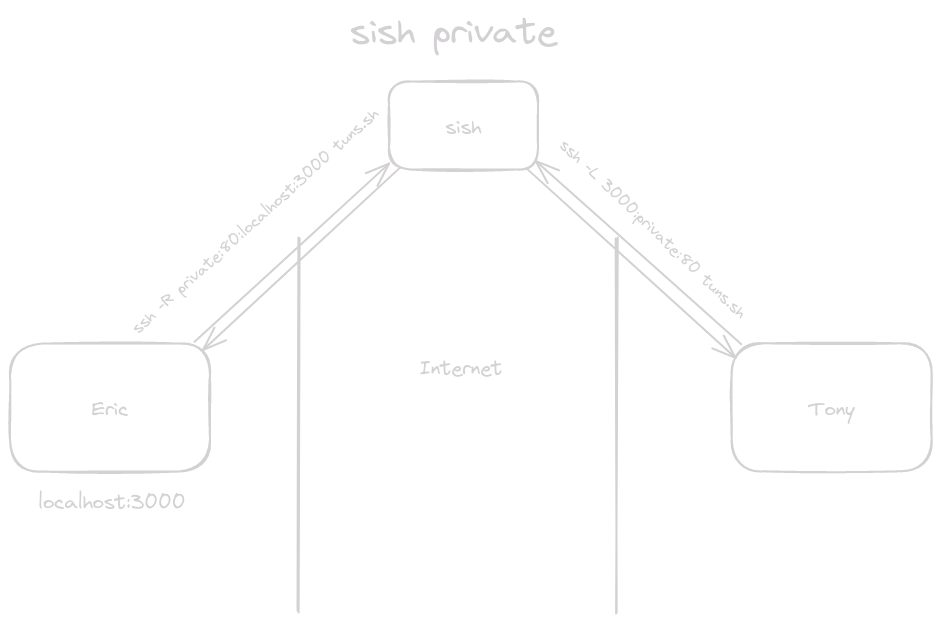How it works
Technical details for sish
SSH can normally forward local and remote ports. This service implements an SSH server that only handles forwarding and nothing else.
But let's first take a step back and illustrate some basic examples of how
things work without sish. Let's start with a simple port forward:
Port Forward #
Here Eric has a web server hosted on its localhost:3000. Eric has to forward
its localhost connection to Tony in order for him to access the web server.

This is manual, arduous, and sometimes difficult to get to work properly because of firewalls. So many people opt to setup a VPN that both Eric and Tony can connect to.
Traditional VPN #
Now both Eric and Tony connect to the VPN service and then Tony can access Eric's web server via Eric's VPN IP.

Great! But this requires both Eric and Tony to connect to the VPN service. What if Eric wants to share the web server with multiple users that are not connected to the VPN? Sometimes it isn't feasible or appropriate to have everyone connect to your VPN.
sish Public #
Enter sish. Using just SSH and a sish service, Eric can create an SSH remote
port forward to connect to sish which will automatically create a public URL
that anyone can access.

Very nice! Tony doesn't have to worry about firewall issues, setting up and
connecting to a VPN, and anyone else can also access the web server via URL.
This is the real power of leveraging sish.
But what if we want the web server to be private so only Tony can access the web
server using sish?
sish Private #
In this example both Eric and Tony setup an SSH tunnel to sish:
- Eric sets up a remote port forward tunnel
- Tony sets up a local port forward tunnel

NOTE: The remote tunnel command needs to include
tcp-aliases-allowed-userswith Tony's pubkey fingerprint
1ssh -R private:3000:localhost:3000 tuns.sh tcp-aliases-allowed-users=SHA256:4vNGm4xvuVxYbaIE5JX1KgTgncaF3x3w2lk+JMLOfd8
This creates a private connection between Eric and Tony that allows Tony to access Eric's local web server without anyone else having access to it!